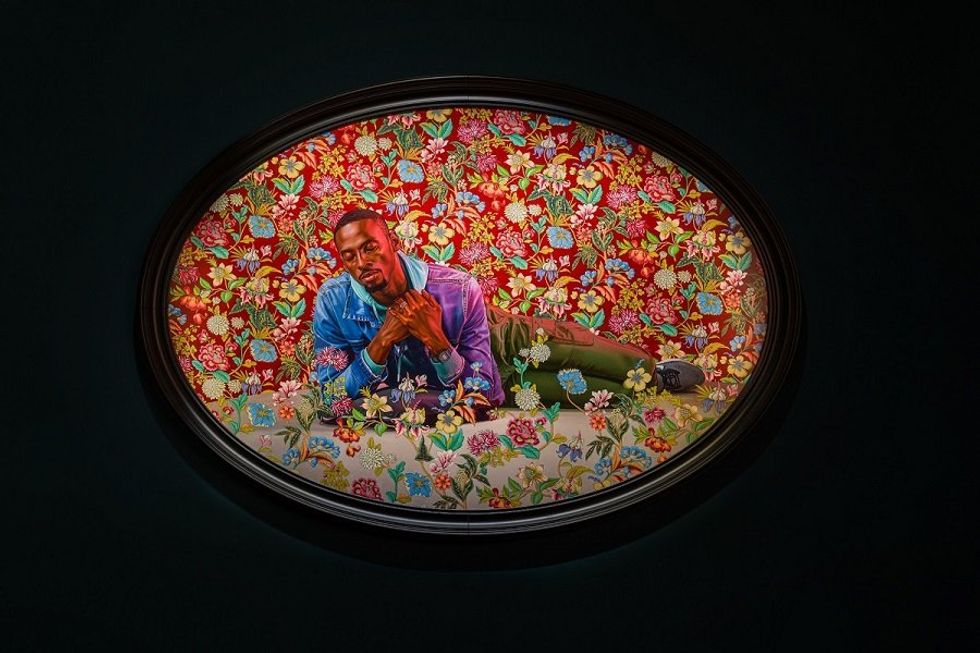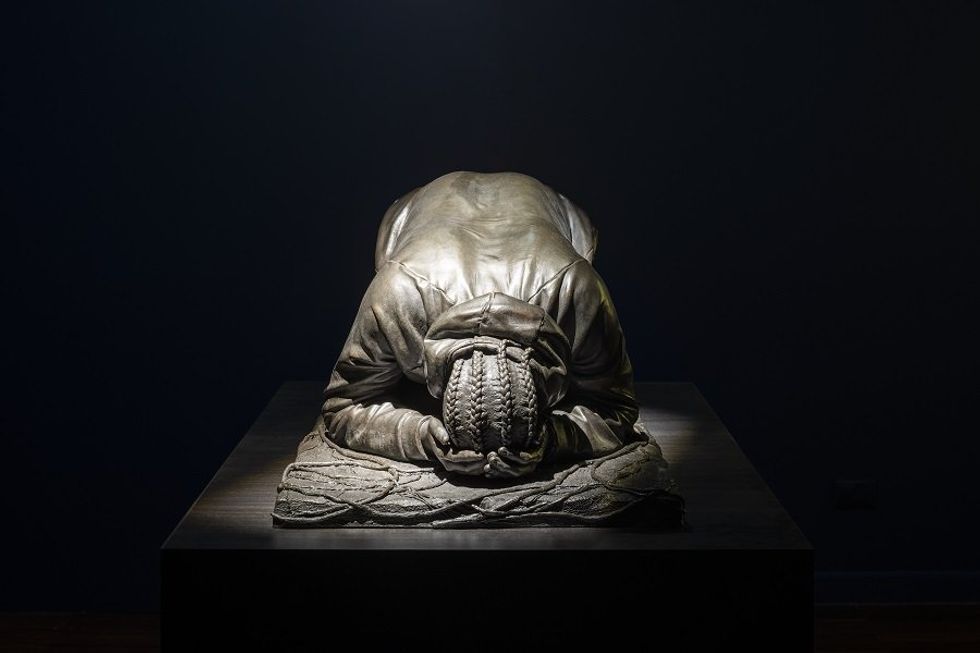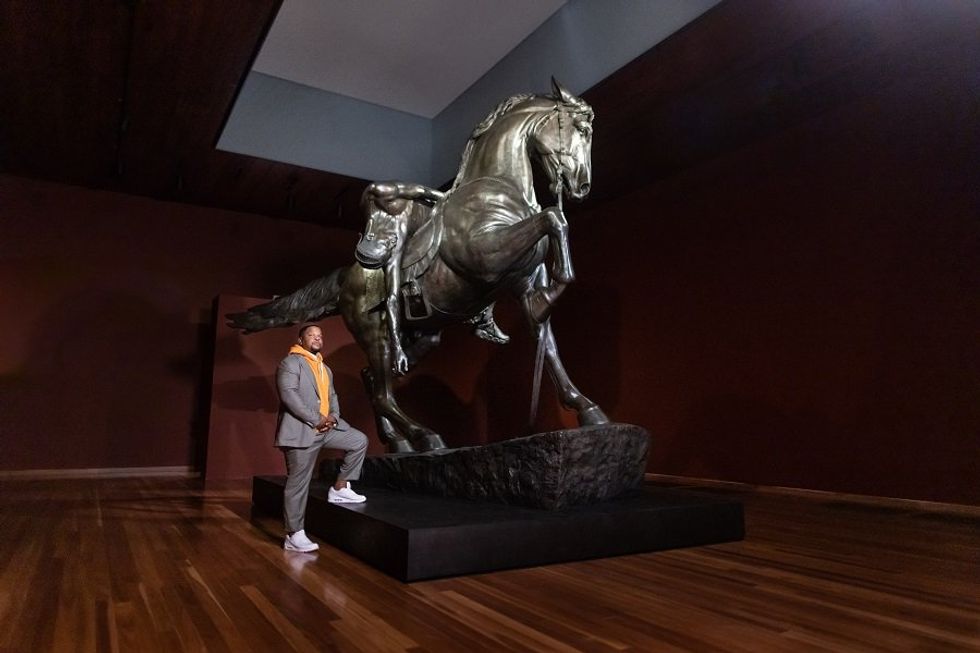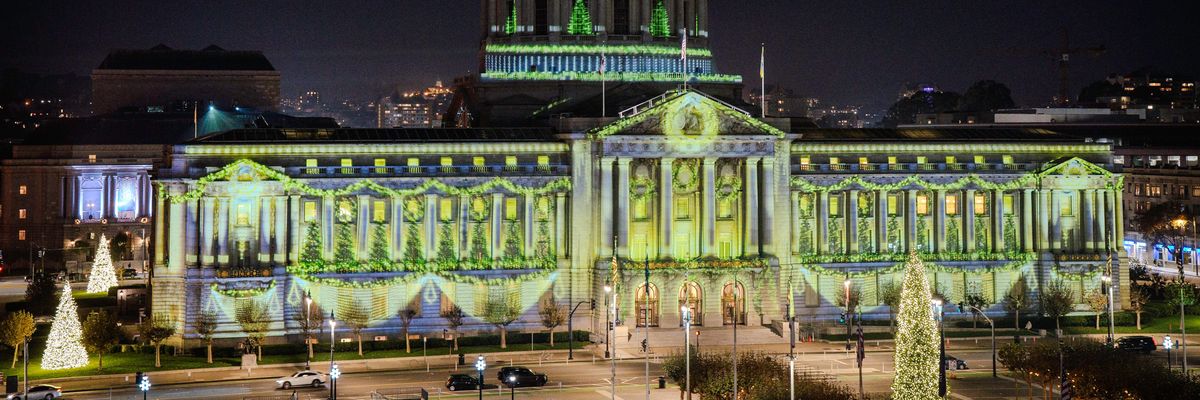Kehinde Wiley’s work cuts deep.
In his paintings, he unsheathes the pain of historic and ongoing violence against Black and brown bodies. Unflinchingly he faces the imagery of power and reimagines its symbols.
In his new show, An Archaeology of Silence, at the de Young Museum, Wiley applies his voice and incredible talent to historic figures in positions of repose—soldiers slain in battle, Christ figures, swooning royalty—by exchanging white subjects for Black ones. In each of his paintings and sculptures, Wiley lays out his subjects in ambiguous states of anguish, relaxation, and death with a reverence and attention to detail historically reserved for whites.
But while there is darkness in his work, there’s also a sense of somber celebration. Nearly every one of the subjects in his paintings and sculptures are enveloped in technicolor foliage, bold damask patterns, and coiling vines, providing an unexpected counterpoint to the brutality implied by the public viewing of Black bodies lying prone.
“It’s a violent resistance to the downtrodden narrative,” explains Wiley. “A kind of growth in the decay.”

The de Young Museum is the first U.S. stop for An Archaeology of Silence (it was first displayed in Venice, Italy in 2022) and the institution was awarded the largest grant it has ever received to be able to do justice to the show not just in its display but in its equitable accessibility. The award has enabled the museum to provide free admission on eight weekends in 2023, free audio guides in the gallery, free public programming including grief workshops and school curricula, and a free community engagement speaker series.
In the twilit gallery on the museum’s second floor, carefully positioned spotlights and bright colors demand attention to Wiley’s work the way stained glass windows do in a cathedral. Using the language of the Christ figure and the sacred, An Archaeology of Silence is almost spiritual, honoring both those who have passed on and those who remain to mourn them.
While the artist is known for his portraiture—he painted Barack Obama’s presidential portrait in 2018—this is the first of his shows to include his bronze sculptures. They echo his paintings in large and small form in their positions and in their extreme attention to details like delicately plaited braids and clothing brand logos.

Like in his previous work, Wiley modeled his figures on real people in the U.S. and Senegal. They wear their own clothing, their own hairstyles, and their own accessories. Each is captured in a specific moment in time. In the show’s most monumental piece, “An Archaeology of Silence,” a majestic, muscled horse carries a shirtless Black man draped over its back. In another, “Youth Mourning (El Hadji Malick Gueye), After George Clausen, 1916,” a man on his knees holds his head in all-consuming grief.
Ultimately, says Wiley, An Archaeology of Silence, a phrase borrowed from French philosopher Michel Foucault, is his attempt to “unearth a full picture of what it means to be laid bare, laid prone.” The subjects are “begging that you take them seriously as individuals,” he says. “It’s a desire to be seen, a desire to be alive—that’s what the work is about.”
The museum will be free for visitors March 18-19, April 15-16, May 20-21, June 17-18, July 8-9, July 29-30, August 19-20, and September 16-17.
// Kehinde WIley: An Archaeology of SIlence, March 18 through October 15, 2023 at de Young Museum, 50 Hagiwara Tea Garden Drive (Golden Gate Park); for tickets and more information on upcoming events and speakers, visit famsf.org.






















